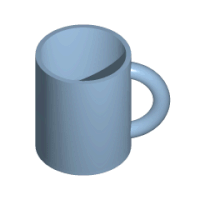
Photo from wikipedia
Abstract The inherent mathematical smoothness of intuitive class shape transformation (iCST) curves has been shown to be suitable for the design of aerodynamic shapes. However, this property means that any… Click to show full abstract
Abstract The inherent mathematical smoothness of intuitive class shape transformation (iCST) curves has been shown to be suitable for the design of aerodynamic shapes. However, this property means that any changes to a constraint are not local but will result in a modification to the whole curve. This poses a problem to the aerodynamic designer when different parts of the curve are required to fulfil particular design requirements. A Hybrid iCST (HiCST) parameterisation approach is proposed which allows two sections of a single aero-line curve to be decoupled, without geometric discontinuity, whilst maintaining the dimensionality of a design problem. The HiCST approach has been tested on two key aerodynamic components of an aero-engine. Firstly, a design space exploration and optimisation were carried out for an aero-engine fan cowl. A comparison of Pareto fronts showed a 3.9% reduction in the minimum achievable nacelle drag from the iCST to the HiCST parameterisation. Secondly, aero-engine intakes were designed with both the iCST and HiCST parameterisations. The HiCST intake showed improved aerodynamic performance in terms of DC60 and IPR and proved more insensitive to changes in massflow and incidence. This development of the method for an aero-engine fan cowl and intake highlights the potential aerodynamic benefit from the proposed HiCST method.
Journal Title: Aerospace Science and Technology
Year Published: 2019
Link to full text (if available)
Share on Social Media: Sign Up to like & get
recommendations!